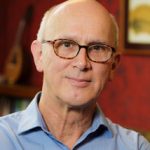www.catholic.com/magazine/print-edition/a-coterie-of-catholic-sense

In the days before the beatification of John Henry Newman, I received a copy of a 500-page encyclopedia of British and Irish converts to the Catholic Church. Roads to Romeprovides sketches—some short and some long—of converts from Reformation times to our own day. In flipping through the pages, I marveled at how many “notable converts” (as the subtitle puts it) the editor, John Beaumont, managed to gather. Let me list some of those that appear under the letter A.
- Harold Abrahams (1899-1978). If his name seems familiar,it is because you watched Chariots ofFire. Brought up aJew, he faced early discriminationat Cambridge until his runningprowess was evident. At the 1924 Olympics, he won a gold medalin the 100 meters race and a silverin the relay.
- Lady Daphne Acton (1911-2003). Her husband was the grandson of the famous Lord Acton (“Power tends to corrupt, and absolute power corrupts absolutely”). Her friend Evelyn Waugh thought her “the most remarkable woman I know,” a sentiment perhaps shared by her friend Msgr. Ronald Knox (himself a convert), who received her into the Church.
- Seventh Earl of Albemarle (1832-1894). He was used to controversy, since there was an uproar when his father-in-law, the speaker of the Canadian parliament, converted to Catholicism. William Coutts Keppel (the actual name of the earl) held several responsible posts in the British government and had a “public row with Gladstone in 1880 about the First Vatican Council.” (More famously, Newman and Gladstone exchanged public letters about papal infallibility, causing an uproar of their own.)
- Elizabeth Anscombe (1919-2001). A brilliant philosophy professor at Oxford and Cambridge, she was a friend of Ludwig Wittgenstein and ultimately his literary executor, all the while being a thoroughly orthodox Catholic. She protested against Oxford University giving Harry Truman an honorary degree, denouncing him as a mass murderer for dropping the atomic bombs. Active in
the pro-life movement, she was arrested for protesting in front of abortion clinics. An Italian priest said of her, “Her philosophy is subtle and sophisticated, but her religion is that of a peasant.” She
took it as a high compliment. - Thomas Arnold (1823-1900). A literary scholar, he was a son of Thomas Arnold, headmaster of Rugby School, and brother of Matthew Arnold, poet and critic. When he converted, his wife, a Protestant, wrote to Cardinal Newman, blaming him for the conversion: “From the bottom of my heart, I curse you for it.” To make her point clear, she smashed the windows of the chapel during her husband’s confirmation.
- Lady Katharine Asquith (1885-1976). Another friend of Ronald Knox, she was the daughter-in-law of Prime Minister Herbert Asquith. She also befriended Hilaire Belloc, Evelyn Waugh, Christopher Hollis, Maurice Baring, and Fr. Vincent McNabb (imagine having that group to dinner!).
- Donald Attwater (1892-1977). His participation in the Palestine campaign during World War I sparked his interest in Eastern Christianity. He wrote several books on the subject, but he may be known best as the co-editor (with Fr. Herbert Thurston) of Butler’s Lives of the Saints. Once, when dining at high table at King’s College, the provost turned to him and said, “I believe, Mr. Attwater, you are a Roman Catholic.” “Yes, Provost.” “And yet, you know, I should judge that you are a very sensible person”—to which Attwater presumably only smiled, but his son said that his father’s “observation when relating his anecdote was that it was a fair comment—two-edged, after all!”
Indeed. I think this book proves—as if proof were needed—that to become a Catholic is precisely what “a very sensible person” would do.
Enjoying this content? Please support our mission!Donatewww.catholic.com/support-us


